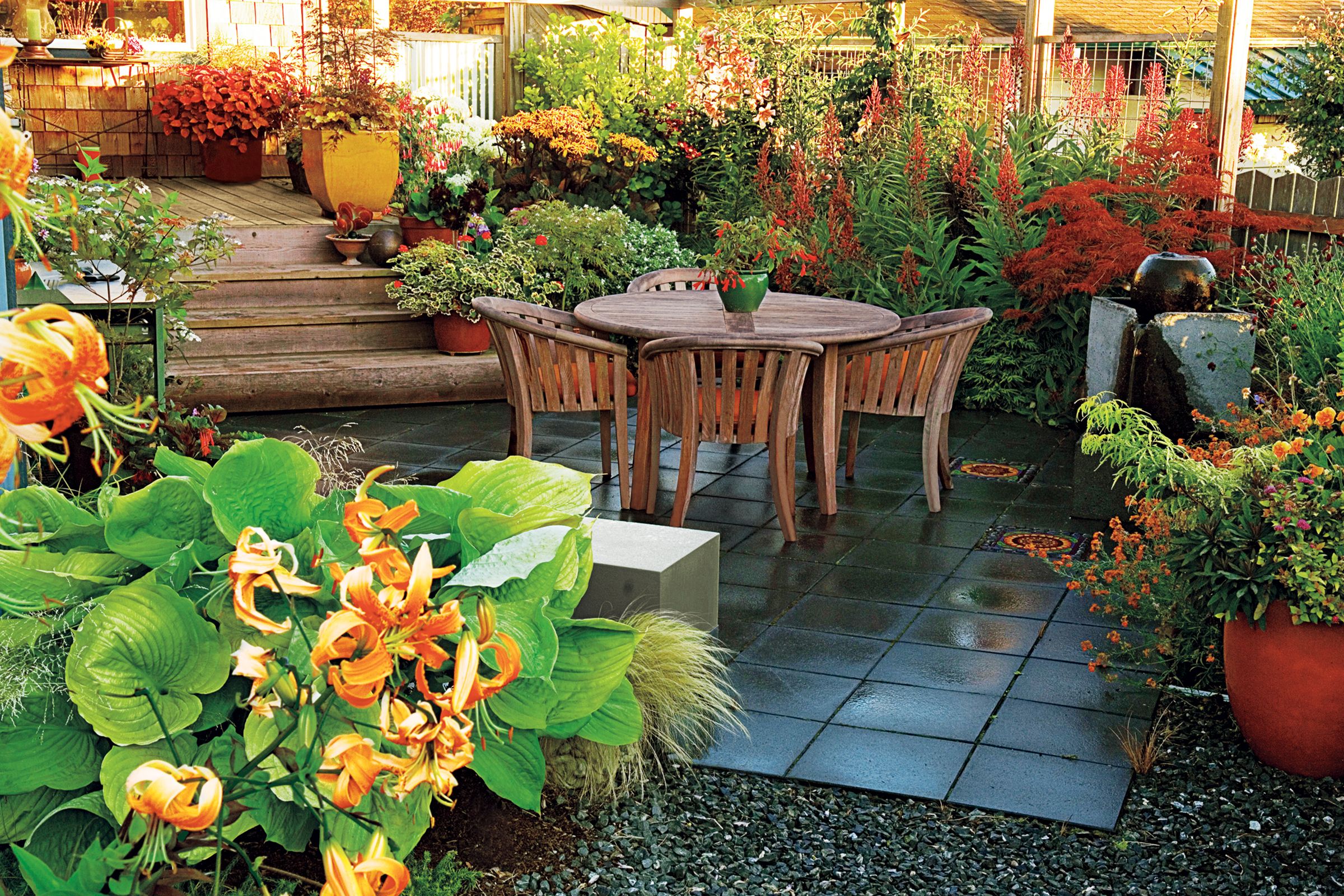I wanted a garden for people, as much as plants. After years of high-maintenance gardening on a large suburban lot, I found myself planning a tiny new space behind a little cottage that my husband and I had bought.
I started with a strong, if somewhat romantic, concept. I’ve always admired the warm, walled areas around English country houses used for sitting and dining outdoors. Inside the walls grow herbs, lettuces, fruit, and flowers for the household. I’d emulate the intimate, sheltered garden closely linked to the house. And I’d create it with modern materials, rather than mossy old brick.
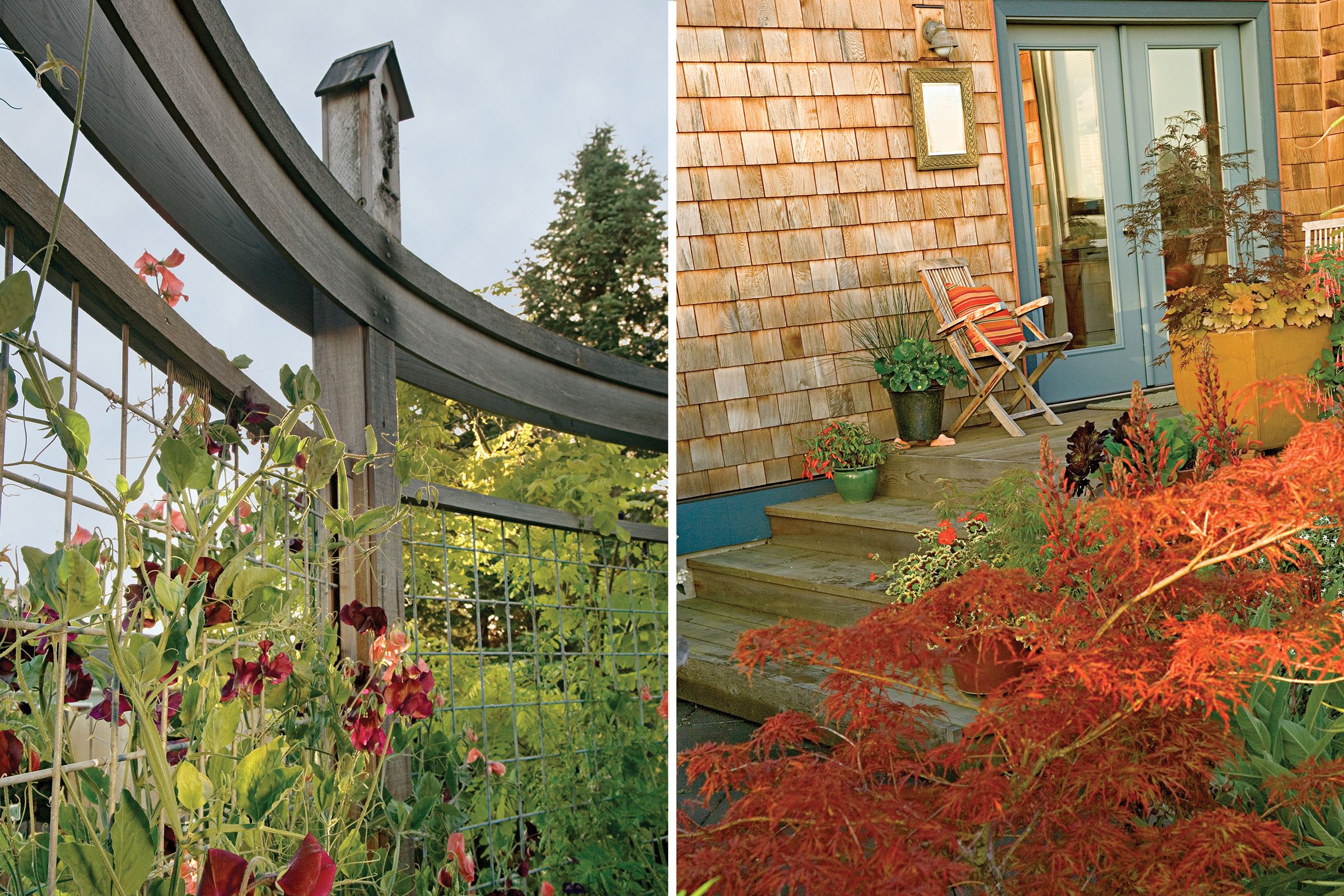
Trellis
Without plenty of hardscaping, I was afraid I’d end up overplanting. Tacoma, Washington-based garden designer Richard Hartlage did a rough sketch of the half-diamond-shaped main terrace, curved screen, and diagonal grid of raised beds that define the garden.
Since the existing cedar fence was still serviceable, Richard designed two 8-foot-tall wire screens in front of it to lend height and dimension to the garden. I’m sure he also hoped that the trellises would encourage me to garden vertically, a great space-saving technique.
Here, the curved trellis near the back of the yard adds height and a privacy buffer. Planted with sweet peas, it provides valuable growing space in a small garden.
Garden Stairs
To play off the low-key style of the shingled house, I used utilitarian materials like gravel and concrete, and a limited but exuberant color palette to liven up the somber materials without overwhelming the small space.
Here, a burgundy-red Japanese maple, ‘Orange Dream,’ underplanted with golden Heuchera ‘Caramel’ provides a bit of privacy on the deck. Another Japanese maple, ‘Baldsmith,’ welcomes visitors stepping down into the garden.
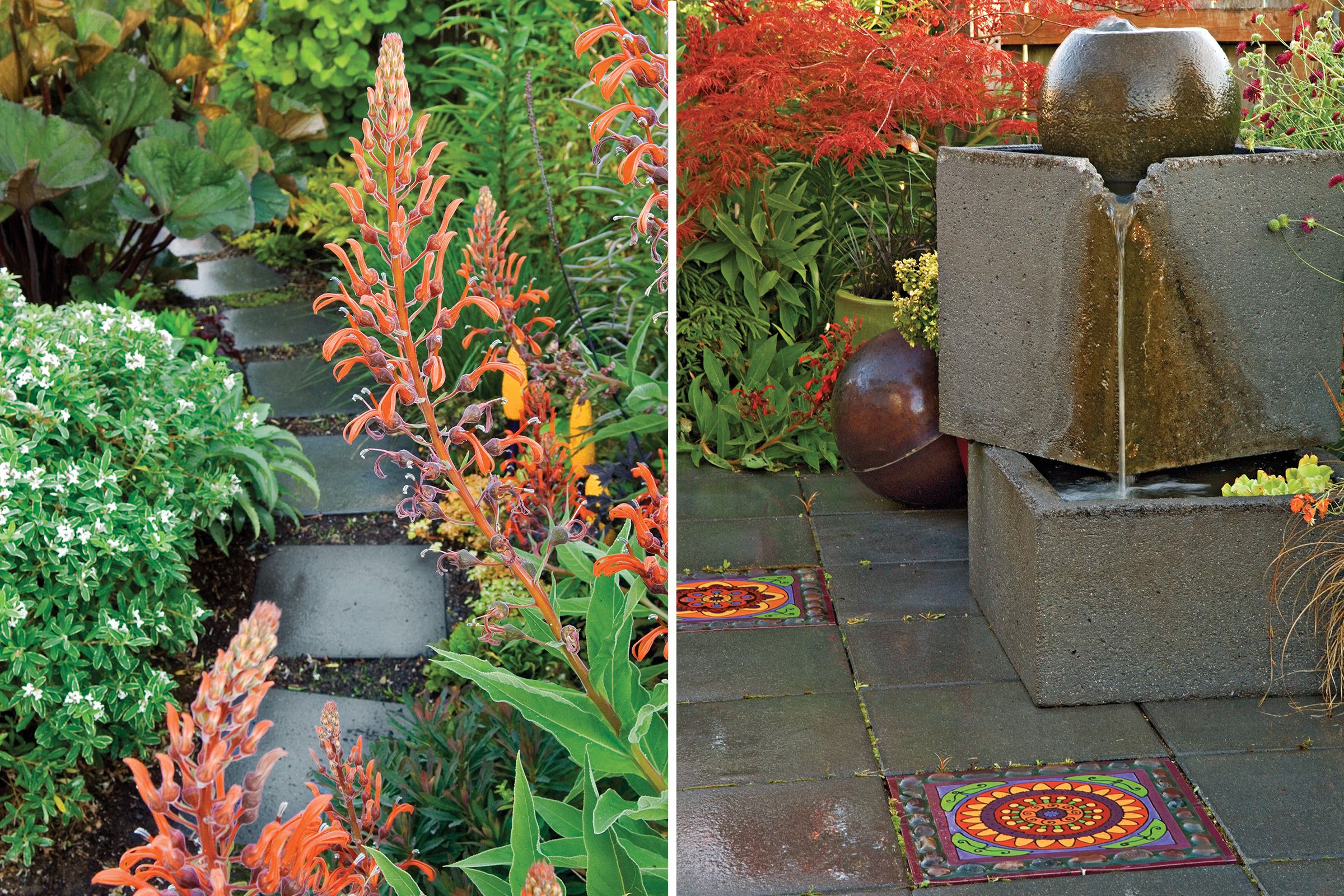
Concrete Stepping Stones
An artist once told me that charcoal gray is the ideal backdrop to set off all other colors, so I chose dark gray pavers for the terrace and path. The gray pavers are now a calm oasis in an explosion of exuberant orange, yellow, and purple plantings.
Here, concrete-paver stepping stones lead to compost and storage areas along on one side of the house. The orange flowers of Lobelia tupa brighten the pathway.
Garden Fountain and Custom Paver
I commissioned a local mosaic artist, Clare Dohna, to make a trio of accent pavers. I sent her paint swatches in plum, marigold, butter yellow, and leaf green. Lilies, roses, hydrangeas, and even trees are all in these dramatic colors that give the greatest effect per square inch of planting space.
I can’t imagine a garden without water for its soothing sound and light- and sky-reflecting properties. But how to squeeze a pond and fountain into such a tiny space? I decided on a freestanding concrete fountain, instead. It merely needs to be filled up and plugged in. Water bubbles up from the sphere on top then flows into a pair of rectangular basins.
The fountain holds pride of place on the main terrace, next to the dining table. Despite its small volume of water, butterflies and dragonflies flock to it, and birds teeter on the rim.
Reading Patio
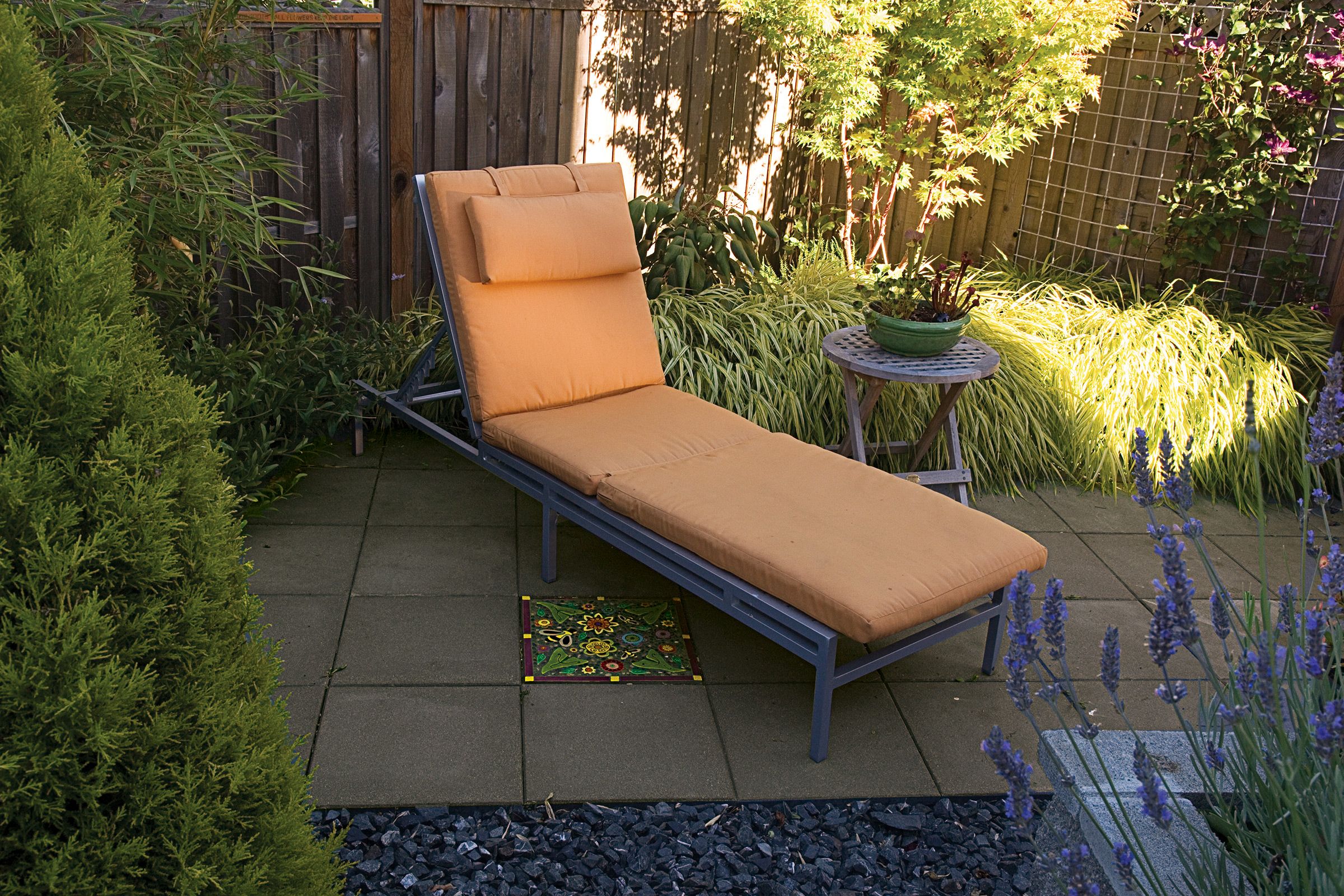
Tucked into the far corner of the garden, a second, smaller patio with a chaise lounge makes an ideal reading refuge.
Feed-Trough Planters
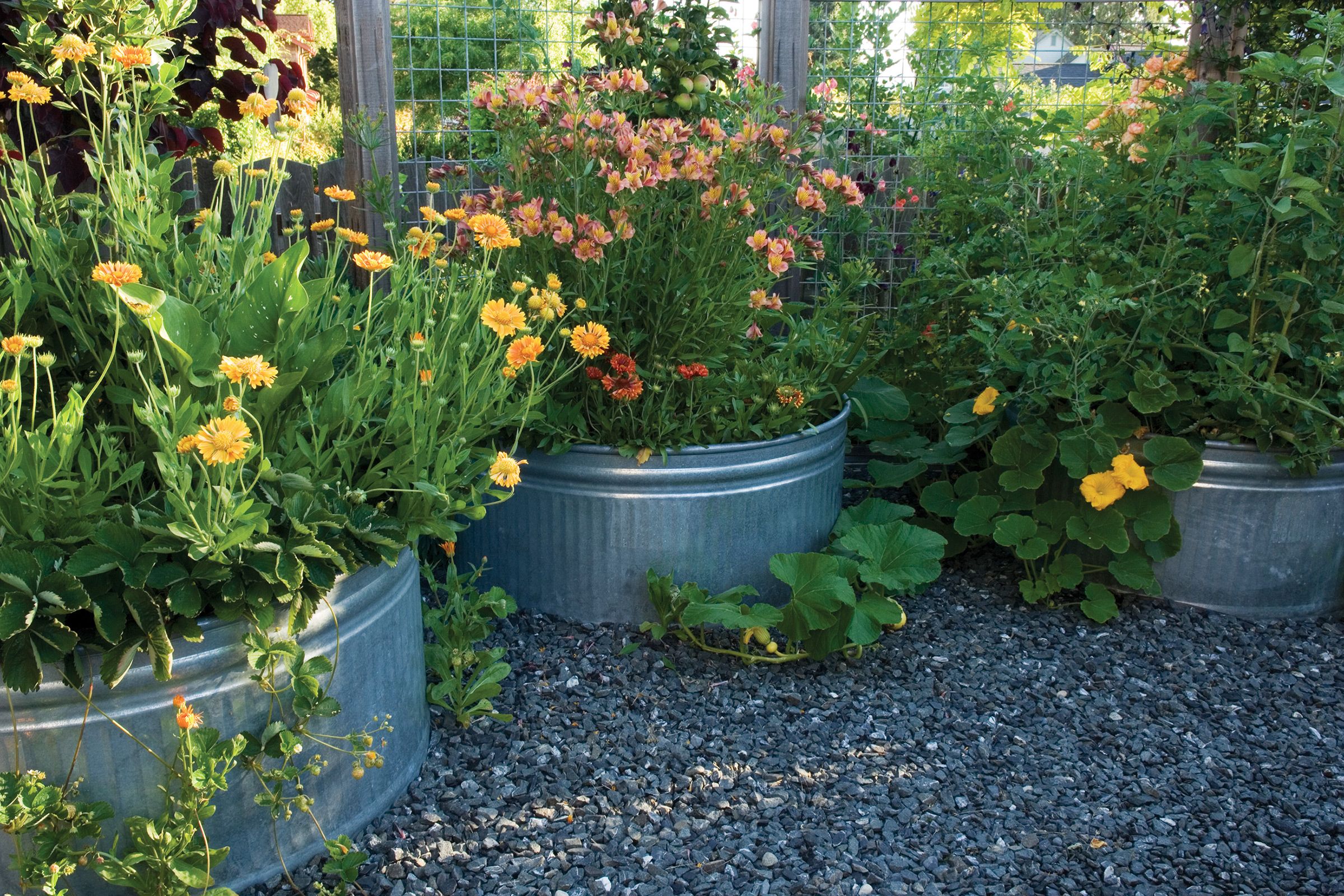
To determine the rest of the materials and get the work done, I sought the help of local landscapers Byron and Dana Moffett and carpenter Shawn Ogle. We created topographical interest, as well as better soil and easier-on-the-back gardening, by building raised beds in two different sizes, shapes, and materials.
Four round galvanized-metal feed troughs (with holes drilled in the bottom for drainage) echo the metal used for the screens. Tomatoes and strawberries ripen quickly in the soil warmed by their reflectivity. The 5-foot troughs also serve as low-maintenance planters for yellow gaillardias, Peruvian lilies, pumpkins, and strawberries.
Concrete-Block Raised Beds
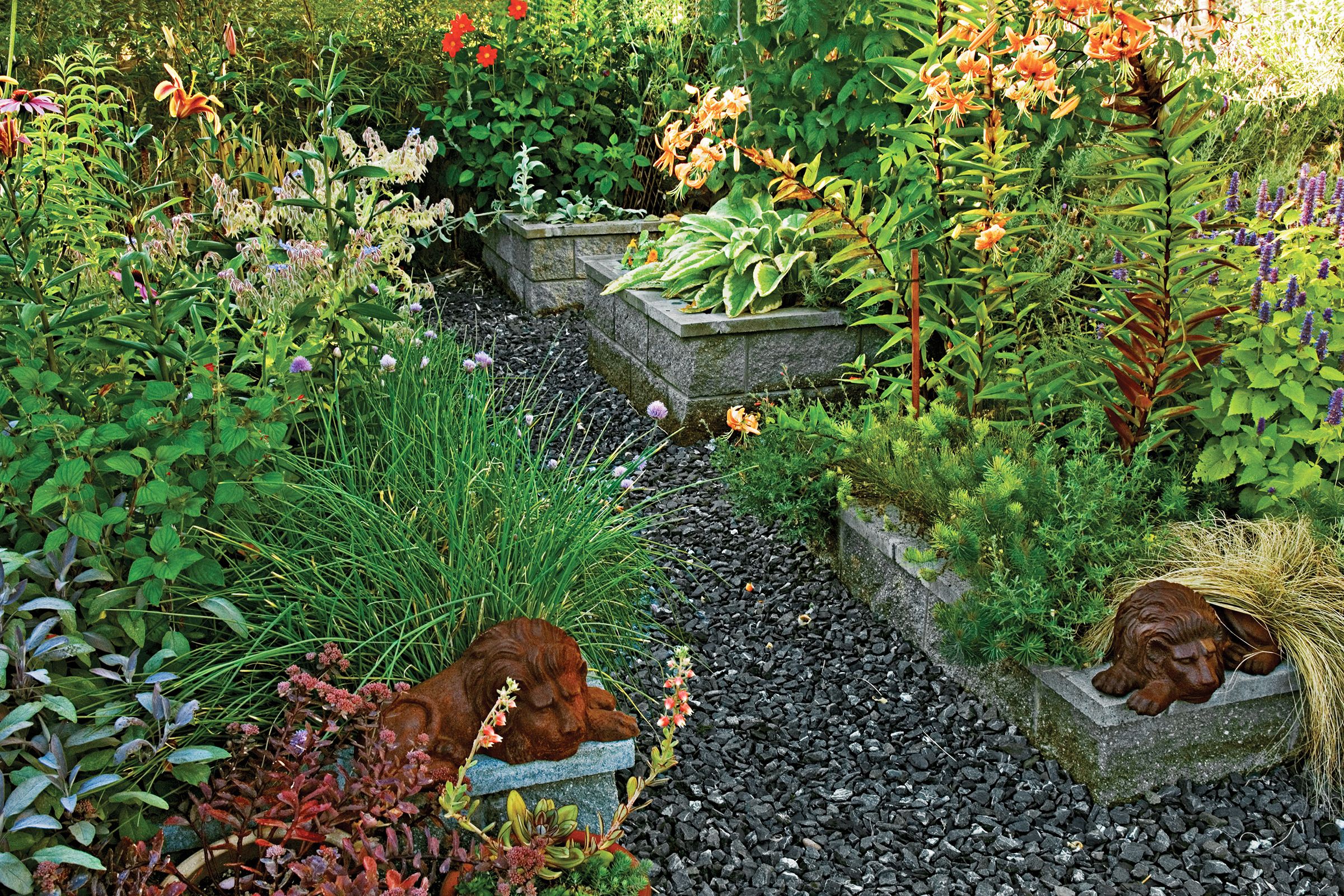
The rest of the beds are rectangular split-faced concrete blocks mortared together with a capstone wide enough to sit on when gardening or to serve as extra seating for parties. Constructing them with efficient drip irrigation already in place makes watering the beds no chore at all.
It’s amazing how the narrow garden is visually widened by angling the terraces away from the house and setting the rectangular raised beds—filled with flowers, fruits, vegetables, and herbs like purple sage, chives, and borage—on a diagonal.
Raspberries and Scented-Leaf Geraniums
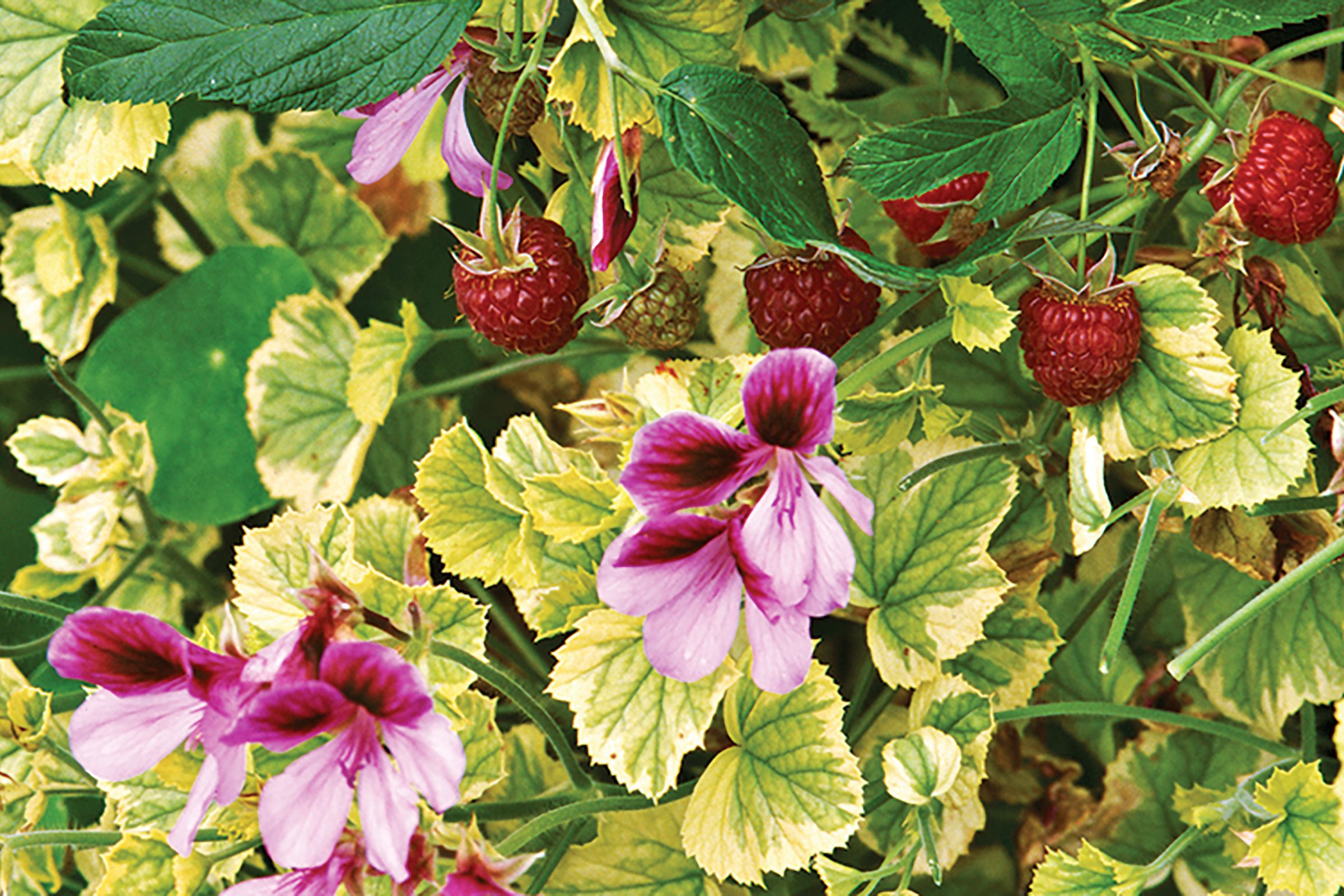
All the time my children were growing up I tried unsuccessfully to interest them in gardening. Now, when they come to visit, the first thing they do is head outside to see what there is to pick for a snack. I like to think that the garden’s comfy places to sit and be sociable or private, its fragrances, art, and color, are part of what attracts them.
But it’s probably the raspberries.
The Plan
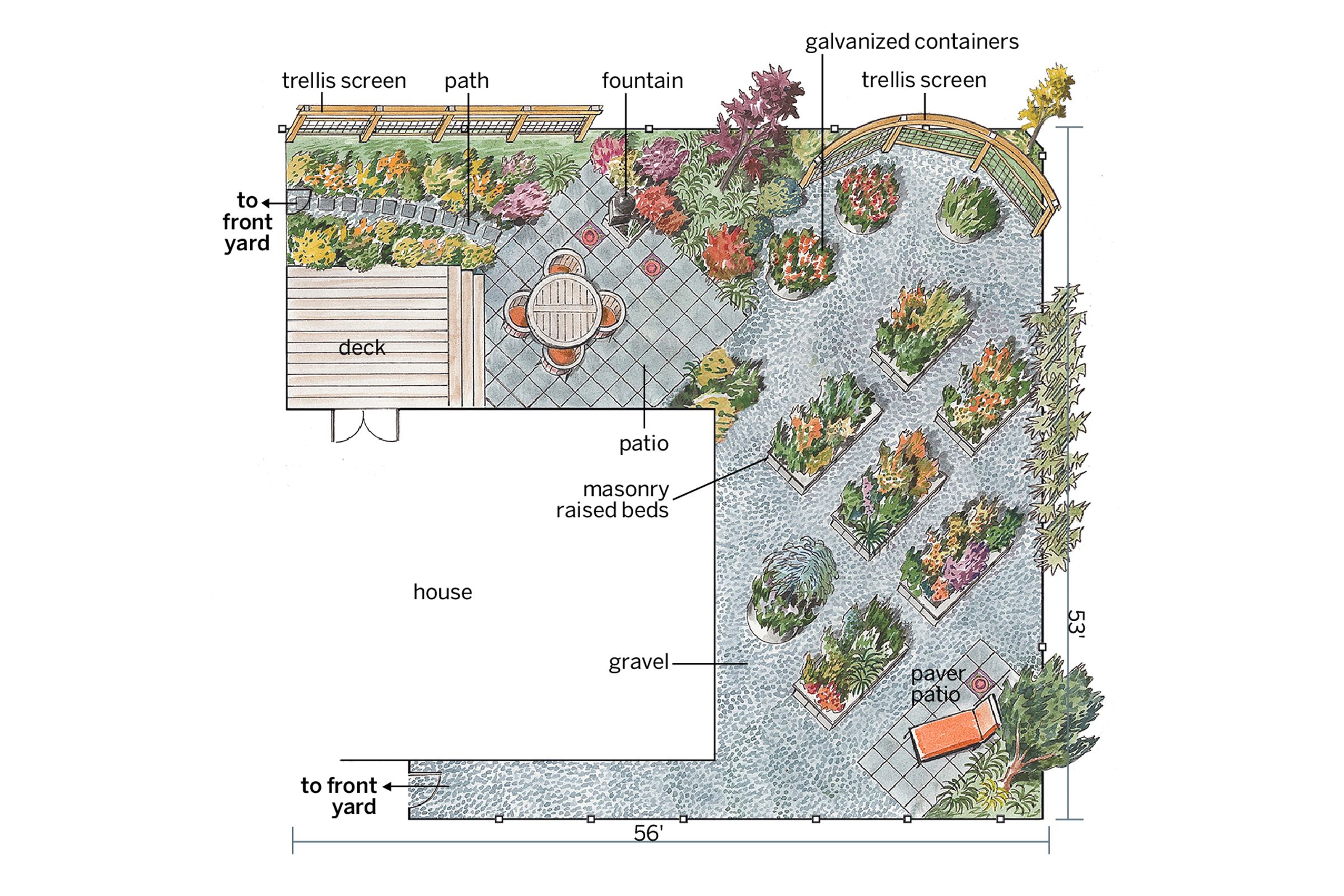
Tacoma, Washington-based garden designer Richard Hartlage sketched out the basic “bones” of this backyard garden: one patio for outdoor dining off the deck and another tiny one for relaxing in a back corner; a grid of round and rectangular raised beds; and two 8-foot-tall wire screens.
The angling of the terraces and raised beds away from the house visually enlarges the space. Curved elements help soften the geometry of the plan. Raised beds give the flat lot topographical interest, as do the tall trellis screens, which also build in some privacy.
